Latin America
Related: About this forumThe Choquequilla Inca Huaca
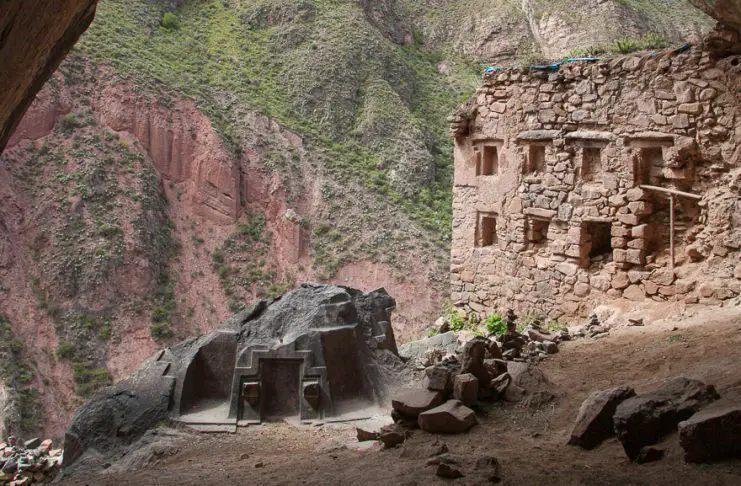
Image Credit: Greg Willis - CC BY-SA 4.0
Choquequilla, also called Ñaupa Iglesia, is an Inca huaca shrine, constructed within a cave opening near the present-day village of Pachar in the Sacred Valley of Peru.
In Inca society, a huaca or wak’a, was a sacred monument built along a processional ceremonial line or route. Inca emperors felt it their right to improve upon nature by sculpting in situ outcrops that often became huacas.
The Inca also believed that natural caves connected them with the underworld and their ancestors, serving as conduits to reach the gods, or were associated with Inca origin myths and ritual emergence.
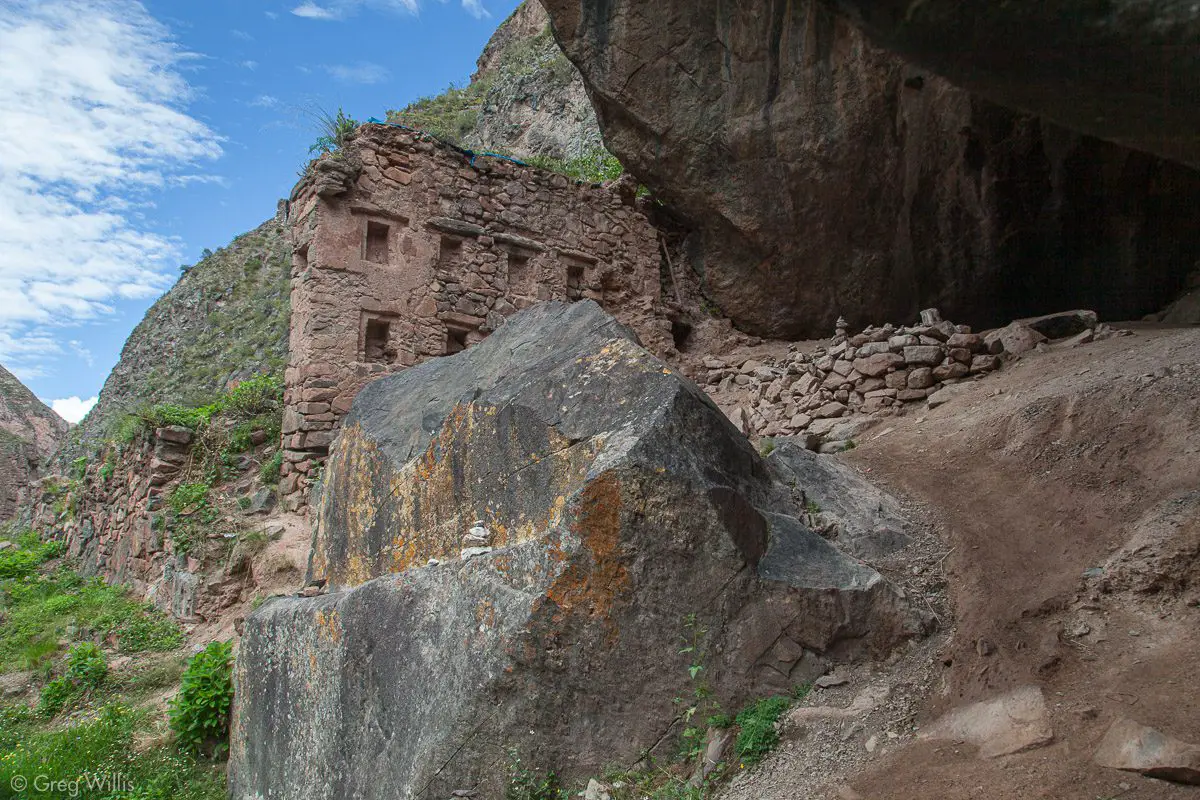
cave niche wall carved boulder at naupa iglesia
Image Credit: Greg Willis – CC BY-SA 4.0
The Choquequilla huaca was constructed where two relatively flat stone faces form an inverted ‘V’ in the cave roof, that during the December solstice sunrise illuminates the cave interior.
An intricately carved shrine made from black granite faces inward toward the cave, that closely resembles the Baño de la Ñusta (meaning “Bath of the Princess”) at nearby Ollantaytambo (although the Choquequilla altar has been badly damaged by looters).
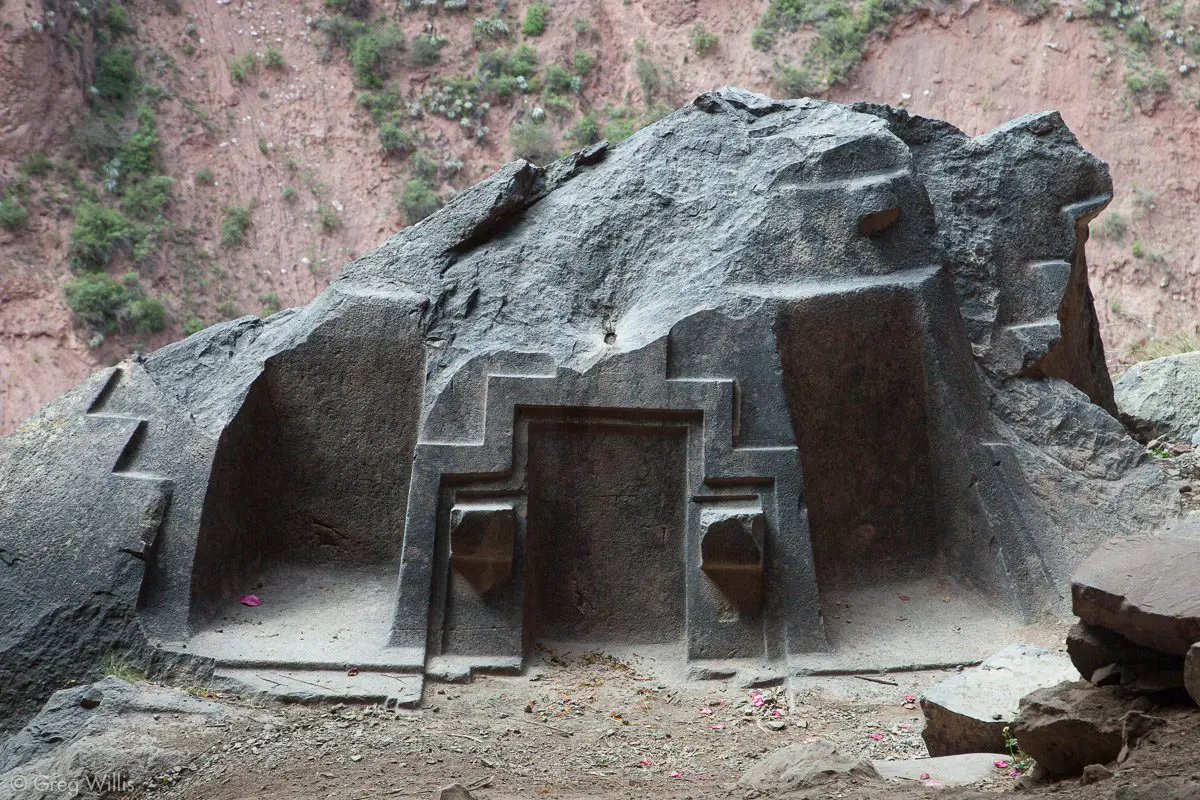
Image Credit: Greg Willis – CC BY-SA 4.0
More:
https://www.heritagedaily.com/2021/08/the-choquequilla-inca-huaca/141171
Judi Lynn
(160,516 posts)I had to find a photo of it to see the sculpting work on an object which had NOT been destroyed by vandals, found this exquisite fountain from that city in a search. Amazing!
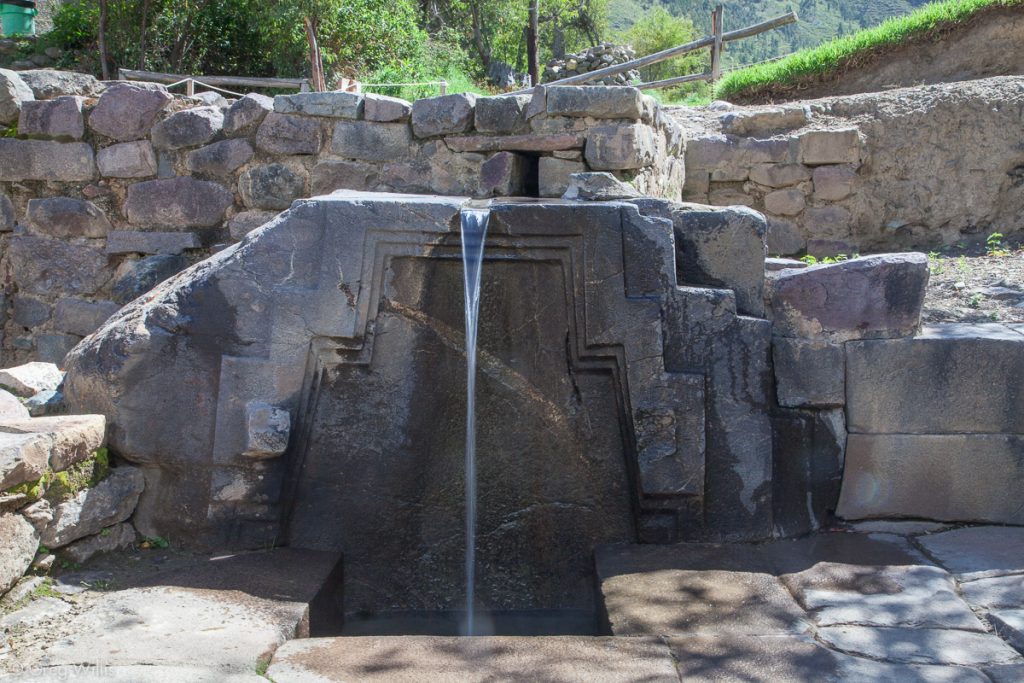
Visiting Ollantaytambo
POSTED ON28 FEB 2018 INCA, RUINS
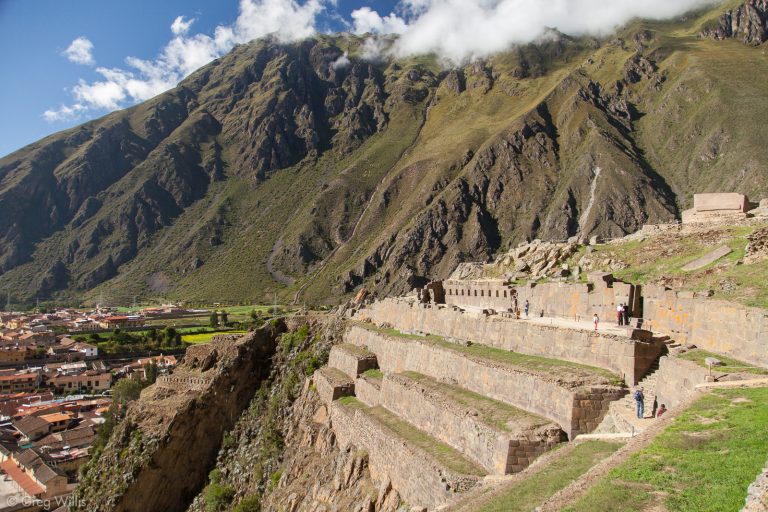
Ollantaytambo Town
Ollantaytambo has a good vibe.
If I had to put my finger on it, I think I like it because it feels like an Inca frontier town. Even now.
Ollanta (the shortened local name) sits at the end of the Sacred Valley: upriver lies plentiful farmland, roads, and many towns; downriver the valley narrows so only a single train track fit between the churning water and the steep hillsides. You’re on the edge of easy civilization, where visitors still pass through to get from their normal world to the wild isolation, and Machu Picchu, that is downriver.
And because it is on this edge and on the way to nowhere, the Spanish conquistadors — for the most part — left it as they found it. The town still has the Inca street grid; the streets still have the Inca water channels running down them; and most houses were built when the Inca king still lived. And it still works as a town. Ollanta feels right-sized and very human.
. . .
Ollantaytambo Ruins
Inca ruins cling to both sides of the steep Patacancha valley, and you’ll find yourself staring at them from the streets of the town thinking “No, that’s too high up for a building.” But yup, they’re up there. Qollqa, Inca storehouses, are on either side; and a temple complex proudly stands flanking the right where it joins the larger Sacred Valley.
The temple complex is the meat of the ruins, and you’ll need your boleto turistico to enter. Get there when it opens, and not just for the good morning light. Like any tourist sight, [universal_truth] if you arrive before the busses you will have a better experience. And count on spending a couple of hours – we stayed for 2 1/2.
Although founded by his grandfather, the great Inca emperor Pachacuti, Manco Inca Yupanqui fortified it against the Spanish and indeed won a battle against them here. But the location of Ollantaytambo was still too close to the Spanish presence in Cusco, so Manco abandoned Ollanta and moved his court and army further downriver into the jungle. And after you climb the terraces, pass the Wall of Ten Niches, and enter into the main temple area you can see when Manco left. Huge partly-carved stones sit today exactly where they were when the Inca masons put down their tools to leave.
More:
https://greg-willis.com/2018/ollantaytambo/
Enoki33
(1,587 posts)is mesmerizing. Impossible to view without asking how?